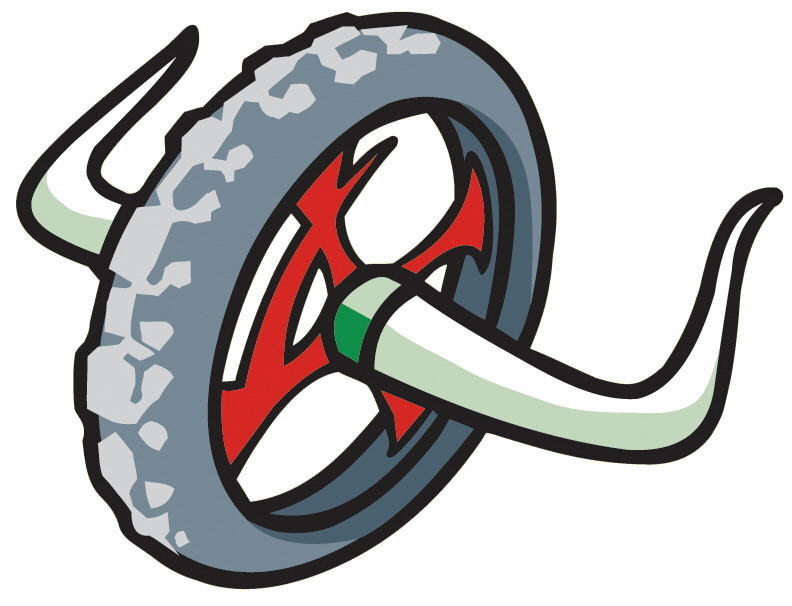
Heal Thy Friend
Be prepared when the only thing between your injured friend
and the nearest hospital is a long trip down the mountain.
By Brian Fiske
Cyclists crash. We endo on logs, lose control in gravel and tip over at stop signs. Occasionally, things get nasty and we end up with road rash, a broken collarbone or worse.
The last thing we want to think about is an injured riding buddy, but better to do so now than to try and figure out what to do after an accident happens. "It's a preparation issue," says Patrick Brighton, M.D., a surgeon, author of Mountain Bikers' Guide for Treating Medical Emergencies, and former Eco-�Challenge competitor. "Know what to do, carry a few supplies, and you'll be able to help." Here's Brighton's advice for handling a trifecta of common �cycling injuries--plus what to do if things get serious.
Broken Wrist
Your wrists are fragile, so sticking your hands out when you get pitched often results in a break. "It's obvious when a wrist is broken," says Brighton. "It hurts like the dickens, swells immediately and you lose hand function--you can wiggle your fingers, but not much else." What To Do: Wrap a mini-pump in a jersey or some socks, place it against the forearm so it extends from the middle of the palm across the injured wrist and up the arm, and duct tape it into place. Gently stuff the injured arm into the rider's zipped-down jersey to keep it from moving. "Don't wrap the wrist too tight," warns Brighton, "or the tape could cut off the circulation as the wrist swells." Another option: Empty a hydration pack of its contents, wrap the pack around the injured part, and tape it into place. Then get to a doctor.
Broken Collarbone
The same force that snaps your wrist can also break your colla bone. Obvious signs of a clavicle fracture: swelling at the site of the break, and pain when the arm is moved. What to do: Stabilize the arm. Fashion a jersey into a sling, or use duct tape: Bend the elbow at 90 degrees, place the arm against the body, then tape it into place so it doesn't move. Wrap the tape diagonally from the hip, over the forearm, across the body in back, then underneath and back in front. Always stick the tape to itself; if you use small pieces on sweaty skin, the tape will slide off eventually. If you have enough tape, wrap the upper arm also, or do another loop around the body closer to the wrist. Wrap until you run out of tape.
Dislocated Shoulder
The force of a fall can wrench your shoulder out of joint, particularly if you've dislocated it before. Signs of a dislocation: searing pain and a grotesque bump where the ball at the top of your humerus (the upper arm bone) is out of place. What to do: If help is far away, make at least one attempt to pop the sucker back into place. Have your friend lie facedown on a big rock, "so his injured arm hangs freely," says Brighton. "Then, pull down on the arm with gentle but incremental pressure." Be warned: "If it's a muscular guy, it could take a lot of pressure," says Brighton, "and the sound of it popping back into place is sickening." Once the shoulder is back in place (or if you can't get it back in), stabilize the arm the same way as for a clavicle fracture, and walk to where you can get help.
The Big Kahuna
If someone is knocked unconscious or complains of neck or back pain after a crash, do not move him--he could have a serious spine injury. After you stop any bleeding and make sure the injured rider is breathing, make him comfortable--drape extra clothing over him to keep him warm, offer some water--but do not allow him to move. "You need to call in the cavalry," says Brighton. Use your cell phone to call 9-1-1. No reception? If it's just the two of you, you'll have to leave your friend and get help. "All you do by waiting is worsen the victim's chances," says Brighton. "Make him comfortable, then get your butt to a phone as fast as you can."
The Mountain Biker's Med Kit
Make your own first-aid kit. Wrap 10 to 12 feet of duct tape around the outside of a 12-ounce MiniGrip Nalgene bottle with loop-top closure (fold the end of the tape over so it's easy to unroll when you need it), and put the following into the bottle: topical antibiotic or cleansing solution (such as betadyne; also available in handy swabs), gauze pads, gauze wrap (such as Curlex or Kling), a small container of hand sanitizer (such as Purell) and ibuprofen. Carry this with you, along with a cell phone, whenever you ride.
What about road rash?
Wash out the bigger chunks of crud using the water in your bottle or pack, put a bandage on the wound, and keep going. "It's going to hurt," Brighton says, "but it probably won't become infected." As soon as you get home, clean it thoroughly with soap and lots of running water--don't scrub hard; you'll just do more damage. Then dress it with a nonstick bandage (Spenco 2nd Skin and BioClusive keep the wound moist to promote healing). If the rash is bigger than your hand, get it checked. "It could be that you have an underlying fracture that you otherwise wouldn't notice," explains Brighton.







 손님
손님
댓글 달기